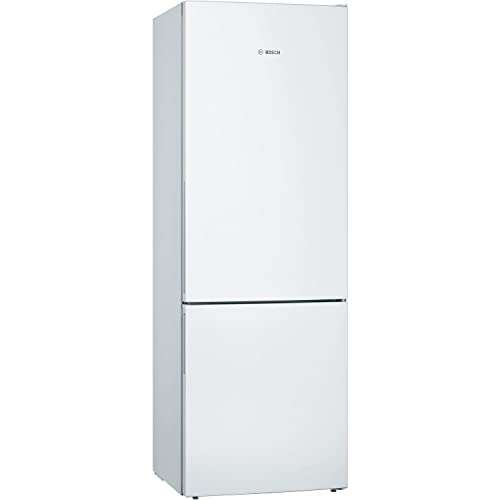SadlerMaribel
SadlerMaribel发表的博客
The Comprehensive Guide to Refrigerators in the UK
Fridges are an essential home appliance in every family, serving a vital function in food preservation and safety. The UK market uses a diverse variety of fridge types, sizes, features, and brands. This article intends to offer a thorough understanding of fridges available in the UK, including their features, energy effectiveness, and elements to think about when purchasing.

Types of Refrigerators Available in the UK
When trying to find a refrigerator, it is important to comprehend the various types offered. Each type includes its own set of features and functions, dealing with various needs and choices. The most common types of fridges found in the UK consist of:
1. Top Freezer Refrigerators
- Description: The traditional design, featuring the freezer compartment on top.
- Pros: More affordable, large, simple access to fresh food.
- Cons: Limited freezer area, the top may be less convenient for bulk products.
2. Bottom Freezer Refrigerators
- Description: Freezer is located at the bottom, enabling simpler access to fresh food.
- Pros: Greater benefit, better exposure of fresh items.
- Cons: Usually more pricey, some may battle with large frozen items.
3. Side-by-Side Refrigerators
- Description: Features two vertical compartments, one for the fridge and one for the freezer.
- Pros: Ample storage space, simple to access both frozen and fresh foods.
- Cons: Wider footprint, they may not fit in smaller cooking areas.
4. French Door Refrigerators
- Description: Combines features of bottom freezers and side-by-sides, with 2 doors for the fridge on top.
- Pros: Stylish design, large, and typically consists of innovative functions.
- Cons: Higher rate point, lines up inadequately with smaller cooking area layouts.
5. Compact Refrigerators
- Description: Smaller designs developed for limited areas.
- Pros: Ideal for studio apartments or offices, energy-efficient.
- Cons: Limited storage capability, may do not have features.
6. Integrated Refrigerators
- Description: Designed to blend effortlessly with kitchen area cabinetry.
- Pros: Custom fit, aesthetic appeal, increases home worth.
- Cons: Higher cost, may provide less flexibility in placement.
7. Smart Refrigerators
- Description: Equipped with Wi-Fi and smart innovation functions.
- Pros: Advanced includes like touch screens and internal video cameras.
- Cons: Expensive, more complex to repair.
| Refrigerator Type | Ease of access | Typical Price Range | Energy Efficiency |
|---|---|---|---|
| Top Freezer | Moderate | ₤ 300 - ₤ 600 | Average |
| Bottom Freezer | High | ₤ 400 - ₤ 800 | Above Average |
| Side-by-Side | Easy | ₤ 800 - ₤ 1500 | Varies |
| French Door | High | ₤ 800 - ₤ 2000 | High |
| Compact | Minimal | ₤ 200 - ₤ 500 | Typical |
| Integrated | Custom | ₤ 1000 - ₤ 2500 | High |
| Smart | Variable | ₤ 1200+ | High |
Key Features to Consider
- Energy Efficiency: Look for models that are energy-efficient. In the UK, appliances are rated from A (most efficient) to G (least effective). An A+ ranking and above can lead to considerable energy cost savings.
- Capacity: Choose a fridge with adequate capability for your family. A standard guideline is 100-200 liters per individual.
- Sound Level: Consider designs that operate silently, specifically if the kitchen is near living areas.
- Cooling Technology: Features like frost-free innovation deserve the investment, as they lessen upkeep.
- Adjustable Shelves: Having adjustable shelves enhances the versatility to save larger products.
- Temperature level Control: Check for user friendly temperature controls and zones for different types of food.
- Design: Choose the style and color that matches your kitchen area aesthetic, whether you choose a modern-day stainless-steel appearance or a timeless retro finish.
Buying Tips
- Identify Your Needs: Consider your cooking habits, family size, and kitchen area.
- Set a Budget: Refrigerators been available in different price ranges. Develop a budget before you begin going shopping.
- Research Energy Ratings: Invest in energy-efficient models to minimize energy costs.
- Check out Reviews: User experiences can offer insights into dependability and performance.
- Compare Brands: Some brand names are known for their toughness while others may offer more innovative functions.
Frequently Asked Questions (FAQs)
1. How long do fridges typically last?
- Fridges usually last in between 10 to 20 years, depending upon the brand name and how well they are kept.
2. Are there any maintenance pointers for prolonging the life of a refrigerator?
- Routinely clean the coils, check the door seals, and periodically defrost if needed to maintain optimum efficiency.
3. What is the very Best fridge-freezer size refrigerator for a household of 4?
- For a family of four, a refrigerator with a capacity of around 400-600 liters is typically adequate.
4. Do I need to fret about energy consumption when purchasing a refrigerator?
- Yes, energy usage is important. Try to find units with high energy efficiency rankings to minimize regular monthly expenses.
5. Should I select a fridge with a water and ice dispenser?
- This function can be hassle-free, particularly for families. Nevertheless, it might require more upkeep than basic models.
Buying a refrigerator is a significant choice for any home in the UK. With different types offered, each with its special features and benefits, it is important to evaluate specific needs before deciding. By thinking about factors such as energy performance, capability, and style aesthetic appeals, customers can choose a fridge that aligns well with their lifestyle, ultimately enhancing their kitchen experience while safeguarding food quality and freshness.
